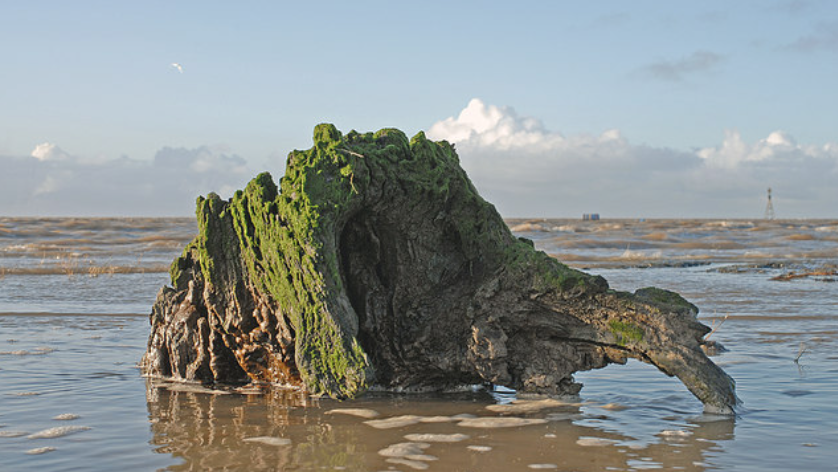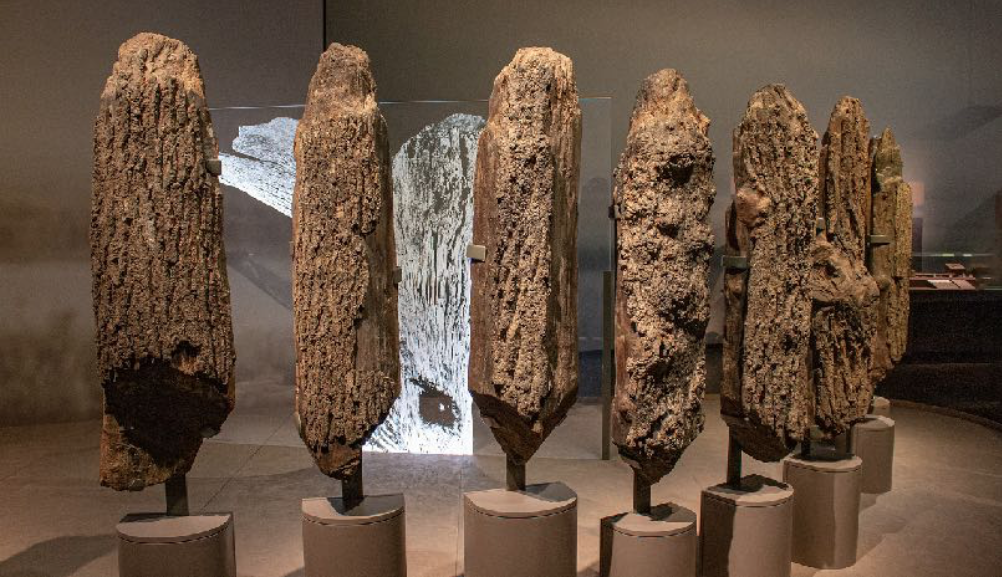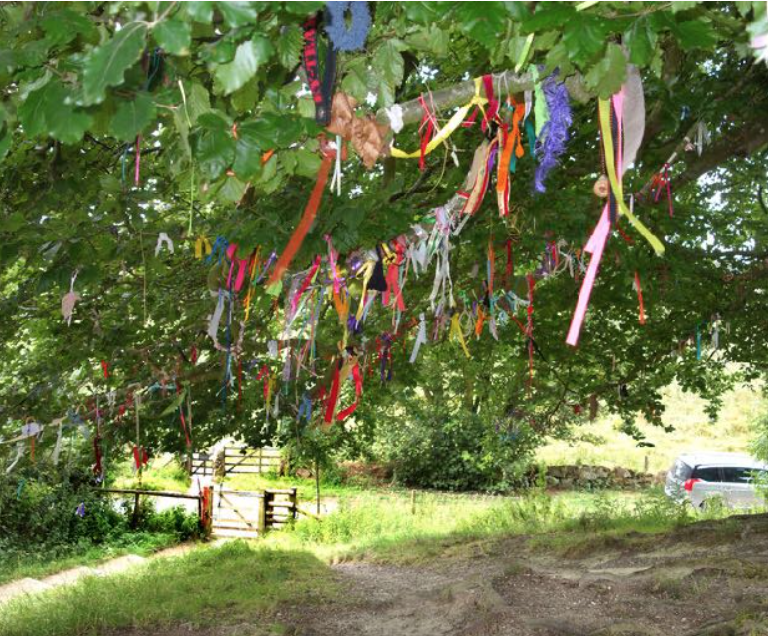O ruined piece of nature! (King Lear, Act 4, Scene 6)
Whether it’s an ancient woodland felled for a poorly thought-through infrastructure project or street trees condemned because an aggressive contract says so, the beast of human industry was winning out long before the railways cut through our landscape; progress always argued to outweigh the loss.
Then, on the morning of 28 September this year, the country awoke to the news that the Sycamore Gap Tree on Hadrian’s Wall had been deliberately felled. A regressive act of violence upon our own house and a dark reflection of human vanity.

In the weeks that followed, mourners laid flowers at the stump. Tourists travelled to pay respects to the fallen tree in such numbers that the area had to be fenced off to prevent further damage to the wall and to deter souvenir hunters. Every family and workplace in the country was talking about it. Something important was happening.
Thankfully, the UK’s climate and geology and a long history of population upheaval – of war and pestilence – has preserved an incredible assemblage of a time long since lost. There was a time when humans treated every part of a tree, whether living or dead, as a most essential element of daily survival, of communication with the outside world and with places beyond the living.

The remains of prehistoric submerged forests scatter our shores; killed and covered by rising sea levels after the last ice melt and only uncovered during storms in more recent times (no doubt in part because we’ve messed with the coast so much, usually to jealously guard the shifting sands). Redcar in Yorkshire, Cleveleys in Lancashire, Porlock Weir in Somerset, Pett Level in East Sussex and Borth in Ceredigion are all examples of these forests – often preserved with signs of human habitation – soon to be lost again to the ocean. Visit while you can.
The famous Sweet Track in Somerset, discovered in 1970 preserved in peat and researched ever since, was a significant ‘infrastructure project’ on the Somerset Levels in exactly 3807 BCE. Certainly local news, even if you weren’t roped into helping move the 200 tonnes of timber. Prefabricated oak planks (from trees already up to 400 years old at the time), with supporting struts made of ash, oak and lime and split using stone axes, wooden wedges and mallets, stretched over a mile across the marsh. As with many things pre-fab, once the timber was moved to the site it’s been estimated that it could have been constructed in a day. IKEA take note. Together with other similar finds nearby, these trackways once formed a network linking a whole community of lake dwellings used by settlers in an annual cycle of winter fishing and hunting on the flooded marsh. An even older trackway, built in 4100 BC, was uncovered in 2009 during excavations at Belmarsh Prison in London; possibly the oldest roadway yet found in the world.
If a squashed old backstreet isn’t your thing, the somewhat younger ‘Seahenge’ in Norfolk is more visually impressive. A timber circle of oak with the awe-inspiring upturned tree root at its centre, built in the spring-summer of 2049 BCE. The trees were felled, transported and intentionally placed for ritual, probably sky-burial. The new bronze axe technology at the time certainly sped up the substantial task of felling the trees, known to have all been carried out in the same year. Now removed from its site and away from inevitable destruction by the sea to a museum, there was much protest by locals and Neopagan groups at the time who believed it should be left where it was always intended to be.

Living trees today can be potentially damaging to archaeology. Root growth and wind-throw can disturb evidence and disrupt the sequence. Tree growth can also alter soil hydrology, chemistry, and stability and attract burrowing animals that find protection within their roots – examples of ‘bioturbation’ – reworking of soils and sediments – by trees. To conserve sites, woody growth is usually cleared from the most sensitive parts, or managed in coppice rotation when biodiversity and aesthetic considerations require vegetation to be retained and where the type of archaeology allows it.
But, like the submerged tree stumps on our beaches and the preserved ancient trackways, archaeologists today are continually uncovering evidence of long-decayed trees in their dig trenches. Root boles – the filled tunnel holes once occupied by tree roots, and tree throw holes – depressions created in the subsoil by the root plates of fallen trees, are often encountered.
Throw holes are found at the edges of ancient camps where early hunter-gatherers created woodland clearings or maintained existing ones. Whether a tree fell by being blown over by wind or being deliberately felled can’t be known for certain. Trees left exposed at the edge of an existing clearing are naturally most vulnerable to wind-throw, but a clearing also provides the perfect space into which to pull a freshly cut tree. Often, the roots of these trees are found as charcoal remains, which certainly suggests deliberate felling.

By way of example, in 2014, excavation at a development site in Oxfordshire found charcoal remains and large quantities of worked flint work in eight Mesolithic tree-throw holes. One such hole was an irregular hollow of 3m – 4.5m wide and nearly half a metre deep. Charcoal found within the hole included oak, hazel, alder, willow/poplar, ash, field maple, cherry/blackthorn and the hawthorn group (which includes crab apple, pear and rowan/whitebeam/service). A good deal of hazel nut shell fragments found there indicate that a nearby petrol garage for lunch was still a very long way off.
Most often, the root systems of fallen trees were left where they fell. Wherever they are found, they still perfectly record the direction that a tree fell and how the hole it created gradually silted up. It’s even still possible to identify a deposit of silty clay where the soil was washed by rain from the uprooted tree root plate thousands of years ago – something that’s easy to see happening today wherever a large tree has fallen.
Often large and fresh assemblages of worked flints and animal bones, such as domestic cattle and aurochs, found within these throw holes suggest intentional and ritualistic placement. They perhaps marked a time when the community was moving on or as an offering made to the land. It has even been interpreted that these tree throw hole rituals may represent the origin of the Neolithic practice of deliberately dug ritual pits, such as the recently discovered Durrington Shafts circle of 20 huge pits near Stonehenge, spanning 1.2 miles in diameter.
Those shards of flint and bone laid at the roots of a fallen tree, a tree root intentionally turned to the sky or the flowers laid at the sycamore stump remain to this day the same essential human response. These are, and have always been, acts that express and record an intimate and felt relationship with trees and the landscape. Perhaps those ancient acts were as political a statement as they can be now. Perhaps our ancestors also yearned for a time that was imagined lost or sought atonement in the belly of the upturned tree for things done or undone.
And, although in modern times we sometimes feel battered and bruised by a sense of individual powerlessness in the face of collective ‘progress’, it’s an emotion towards trees that still has the capacity to bring us together to this day.

